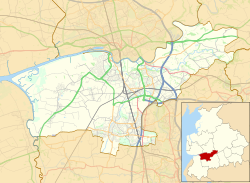 Ribble buses at the museum in 2012 | |
| Established | 1983 |
|---|---|
| Location | King Street, Leyland, Lancashire, England |
| Coordinates | 53°41′41″N2°41′33″W / 53.6947°N 2.6926°W |
| Chairperson | John Gilchrist |
| Website | www |
The British Commercial Vehicle Museum displays antiquarian buses, early fire engines and other historical and commercial vehicles produced by the British manufacturing industry.
Contents
The museum is located in King Street, Leyland, Lancashire on part of a site previously occupied by the Leyland Motors factory, the source of many exhibits.
Funding methods include the admission charges and membership tickets. More recently, a major investment by the Heritage Lottery Fund has contributed to a major refurbishment and website redesign by local digital agency Fertile Frog. The museum is now open throughout the year( see website for details ).
Events include Classic Vehicles, Model Makers Exhibition and the Spring Transport Show.
In 2010, the museum was one of three featured on Richard Macer's BBC Four series Behind the Scenes at the Museum. [1]
